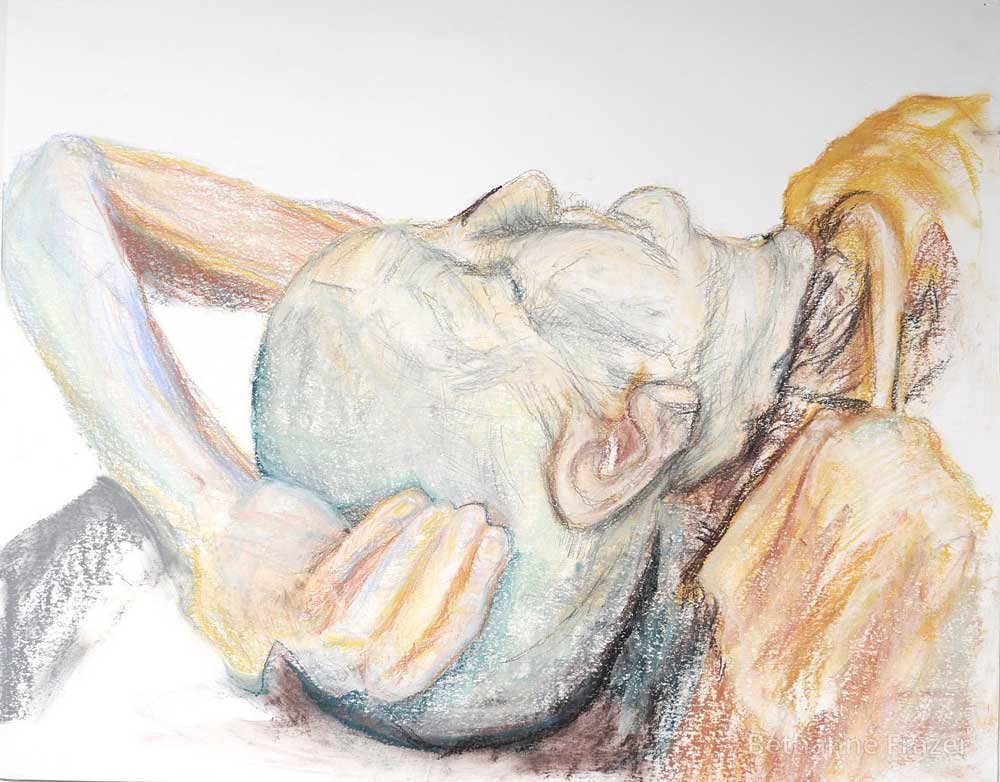Cadaver Drawing Study by Bethanne Frazer

On Wednesday evenings in the academic year 2017-18, I would draw cadavers in the Hahnemann Gross Anatomy lab. I recall feeling my nerves crackle with anticipatory anxiety the first night the instructor brought us to the lab. Out of the elevator, you could immediately smell the vinegary smell of embalming fluid. He opened the door and turned on the lights, where each metal table had a figure at rest beneath a white sheet. They seemed huge from the doorway but smaller as we entered their space. The instructor put a pair of disposable gloves on and beckoned us around. A mound of stained white linens vaguely resembled a human form. The room seemed to grow quieter once he pulled the sheet down. At some earlier point, the skull cap and brain were removed. The skull was then bisected revealing a cross-section of teeth and tongue. I had never seen anything like this before.
I attended the weekly cadaver drawing sessions with the determination to set up quickly and make the most of my time. I would don an apron and put on a respirator mask in the elevator. With similar dutifulness to the surgeons before me, I would be equipped with pastels and charcoal in a cigar box, a drawing board, and assorted large paper when entering the lab. The flow state I entered in the space felt reverent. I was a part of the life and history of these human remains. Each is unique and decipherable as a person that existed in the world before this place, yet the similarities amongst them indicated their new experience in death. Their noses all seemed a bit mashed in from having been, at some point, lying on their face. Their heads had been shaved. There was a lot of yellow ochre in the colors of their flesh. They all had wrinkles on their fingertips as if they had washed a sink full of dishes.
We respectfully re-draped the sheets and towels over the bodies once we were done for the session. I appreciated the quiet of this space. I found it to be meditative, relaxing, and non-threatening. Everyone here had a goal, and everyone here was receptive to the gravity of what we were doing but it all felt very normal. It was like any open studio figure drawing class, but the model did not require breaks to rest. I rarely ever felt time pass. I would stand for the duration of the 90-minute session, despite my experience of chronic pain. If I did sit, the stool was positioned between the metal tables. If they could, one of the bodies would have easily been able to lift a hand and place it on my shoulder as I sat drawing. Sometimes, I felt like I was close enough to hold their hand.